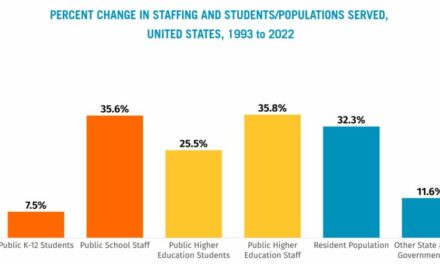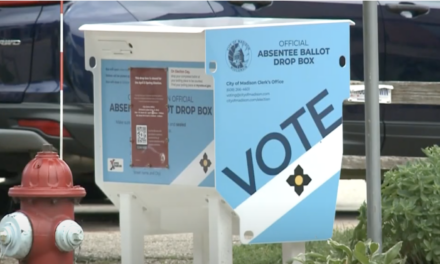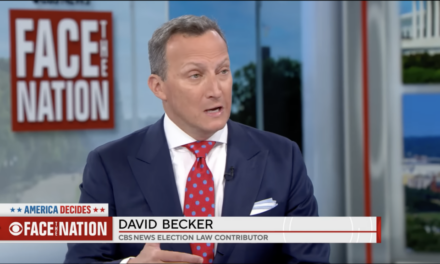We support our Publishers and Content Creators. You can view this story on their website by CLICKING HERE.
How can a health insurance plan offer increased benefits from one year to the next while simultaneously lowering premiums? Simple: Taxpayers pay the difference.
Such are the results from the “premium stabilization demonstration” — read: bailout — of the Medicare prescription drug program that the Biden administration announced this summer. While Kamala Harris, Biden’s putative successor, and Democrats will breathe a sigh of relief at the news of premium reductions, taxpayers will end up the losers from this costly giveaway to insurance companies.
Bailout to Counteract Skyrocketing Premiums
The latest developments come as a consequence of the (misnamed) Inflation Reduction Act that Democrats passed in 2022. The richer benefits — a new cap on seniors’ out-of-pocket drug expenses, coverage of vaccines, etc. — coupled with structural changes to the Part D pharmaceutical benefit, would on their own lead to significant premium increases.
In fact, premiums for standalone Part D plans — that is, plans that only cover prescription drugs — rose by an estimated 21 percent from 2023 to 2024, and the number of plans and firms offering plans each dropped to all-time lows. When plans made their bids for 2025, the Centers for Medicare and Medicaid Services (CMS) admitted that insurers’ “resulting premium changes could create disruptive enrollment shifts.” In other words, the Biden administration and Democrats faced the prospect that millions of seniors could receive word of major premium spikes, and/or insurers dropping coverage entirely, when Medicare open enrollment starts on Oct. 15, just weeks before the election.
In addition to the electoral implications of the IRA’s changes, Democrats also faced an ideological quandary. Increasing premiums for prescription drug coverage would likely prompt more seniors to switch from traditional Medicare to Medicare Advantage, which is delivered by private health plans. Because Medicare Advantage plans also cover hospital and physician visits, they have a greater ability to absorb the higher costs of the new drug benefits than standalone plans that only cover prescriptions.
The numbers bear out this dynamic: Medicare Advantage plans have skyrocketed in both number and enrollment, even as the number of standalone Part D plans declined by 25 percent from 2020 through 2024. Those facts gave Democrats, who naturally favor government-run Medicare (and government-run anything), added incentive to act.
High Costs Not Fully Quantified
Rather than facing the consequences of the law they rammed through Congress, the Biden administration decided to tap taxpayers instead. CMS created the bailout program in late July and announced the results recently. For 2025, premiums for standalone Part D plans (i.e., the plans for which the “demonstration” was created) will fall by an average $1.63 per month.
Unfortunately, the Congressional Budget Office has not yet published any formal estimates of what this bailout will cost the taxpayers footing the bill. One early report indicated a rough estimate of $5 billion — this for just the first year of a program scheduled to run for “at least two subsequent demonstration years.”
In its multibillion-dollar cost and lack of clear objectives, this program also echoes a similar “demonstration program” whereby the Obama administration shoveled money at Medicare Advantage insurers shortly after Obamacare passed, largely to stop them from cutting plan offerings as Barack Obama ran for reelection. In that case, the Government Accountability Office cited a lack of legal authority in recommending that CMS nix the “demonstration” entirely — a recommendation that the Biden administration ignored.
Stop the Shenanigans
Republicans have tried to expose the Biden administration’s actions, at least to the extent that they can. Leaders of several committees wrote a letter in August asking for the Government Accountability Office to investigate this legally questionable bailout. The House Oversight Committee had organized a September hearing on the matter, although schedule changes meant the hearing had to be postponed until Congress returns after the election.
Letters and hearings aside, the best response lies in Congress finally exercising its “power of the purse” and passing legislation to specify that these types of demonstration projects cannot spend any more money than allowed under current law. As I previously noted at The Federalist, Democrats have shown a growing proclivity in recent years to shovel money at insurance companies to solve their political problems.
At a time when the federal government has incurred over $35 trillion in debt, stopping these types of bailouts would represent a rare instance of fiscal common sense. It also would restore the rule of law and rein in the crony capitalism that explains why the country loves to hate Washington.

 Conservative
Conservative  Search
Search Trending
Trending Current News
Current News 





